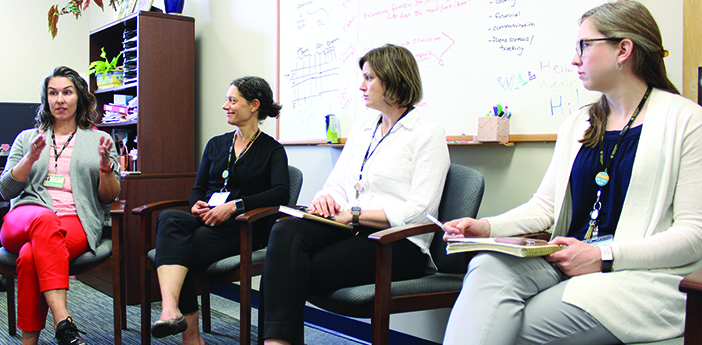To treat children with anxiety, some therapists need to overcome their own.
The children’s mental health crisis is really two crises. Youth anxiety and depression doubled during the pandemic, while the pool of mental health providers stagnated, leaving ever more children and families desperate for care.
The remedy many need is no secret. The gold-standard treatment for anxiety disorders—the most common mental illness among American children—is exposure therapy, the process of gradually exposing someone to the object of their fear.
For more than two decades, researchers at Bradley Hospital’s Pediatric Anxiety Research Center (PARC) have been studying how best to train providers to conduct exposure therapy. Now they are scaling what they have learned by launching the PARC Training Institute in partnership with Blue Cross Blue Shield of Rhode Island. The institute offers remote, customized training in exposure-based cognitive behavioral therapy (CBT) to therapists and organizations such as community centers, schools, psychiatric hospitals, and insurance providers.
The goal is as expansive as the crisis: train as many therapists as possible.
“There’s this huge shortage of people who ever get training in exposure-based CBT or even know it’s the best treatment,” says Jennifer Freeman, PhD, director of PARC and a professor of psychiatry and human behavior at Brown. “The idea of the training institute is twofold: it’s expanding our workforce, and training more people to identify exposure-based treatment as something they should use.”
Training therapists to provide exposure, however, is not so simple. Fewer than half of those trained in exposure therapy actually use it—often because of their own anxiety about provoking patients’ fears, says Joshua Kemp, PhD, an assistant professor of psychiatry and human behavior and a staff psychologist at PARC.
“Some people worry their patients will be upset with them, or could drop out, or something could go wrong,” Kemp says.
Additionally, the elements of exposure that lead to better patient outcomes are not widely understood.
“A lot of treatment protocols say ‘do exposure,’ but they don’t talk about what to do,” says Jenny Herren, PhD, an associate professor of psychiatry and human behavior who leads PARC’s outpatient services. “There’s a lot of variability out there.”
That’s where PARC’s expertise comes in. After training more than 200 providers, staff, and clinician research participants in exposure therapy, Brown faculty at PARC have had ample opportunity to study the training
process itself.
They have learned, for example, that the best way to help therapists overcome their fear of conducting exposures is—wait for it—undergoing exposure therapy themselves. They have also tested which elements of exposure predict strong patient outcomes and created a training guide to help therapists maintain these best practices.
That scientifically validated guide forms the backbone of the PARC Training Institute, which launched this summer with 25 in-network Blue Cross clinicians selected for the diversity of patients and regions they serve.
Meanwhile, researchers continue to pilot and study creative solutions to the shortage of trained mental health professionals. They are concluding a five-year study of team-based exposure therapy, in which patients see a licensed therapist on a regular basis but primarily do exposures with “coaches” at home. They’re also testing virtual reality as a training tool to simulate exposure sessions for therapists.
The training institute may ultimately adopt these innovations in its workshops and consultations. As long as children remain on PARC’s waitlist—typically, there are 100 or more awaiting treatment—there will be work to do.
“It’s not just about access to care,” Freeman says, “but high-quality care for every kid.”




